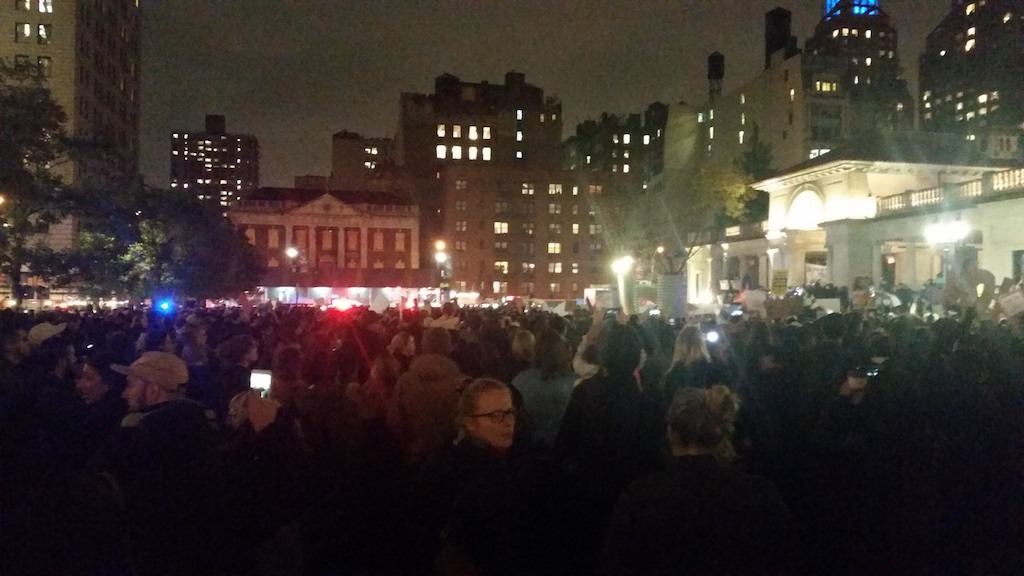There used to be an agreement between the seasons. After awhile they decided to sit down and work it out. And they agreed that they would more or less come and stay about three months each and then they would go to wherever seasons go when they’re not where you are. And this would be a cycle and it would go on all the time. And then, one year in America, one of the seasons got mad, and decided it was going to stay, decided that the way things were done there made him feel at home... It wasn’t in terms of the temperature, it was in terms of the philosophy, the politics, the psychology, the way things were going in those directions… And so for a long time where we come from there has been no spring, and no summer and no fall. We have been taken over by the season of ice. —Gil Scott-Heron, from a spoken intro to “Winter in America” (1973). 1
- All italicized text in the following letter is from Gil Scott-Heron. See also – Winter in America
January 17, 2017
Dear CAS-editors,
I’ve been wanting to write you a letter from the U.S. for a few weeks, but the situation is so volatile here. The days are split – half the day is spent spiraling through a news hole, reading articles I’d rather not read about things I wish weren’t happening, and the other half is spent dreaming of how to convert revelations of ill-gotten power into some kind of resistance. Since the election we have experienced the opening by force of a new kind of time-space. It’s as though there were not enough of either to process everything coming in. Our fragmentary attention is spent on phone calls, at least two per day, and critical talks with friends trying to unpack the absurdity of the moment. Much has already been written about how we came to these days and sleepless nights, about the nightmares when you do sleep, and the nightmares that follow you through your days so that you wish you were dreaming it all anyway. The fallout of this election is a fear for the future. We can’t be sure what the coming weeks or months will bring. Will we witness a (neo)fascist/corporatist/militarist takeover of civil society? Or the persecution, violation, and criminalization of already precarious groups, both here and abroad? If the President-elect’s cabinet choices or campaign promises are any indication, we could see both. We don’t know. But we can’t risk waiting. And there is transformational potential in this moment as well. We will fight to oppose whatever Trumpism actually turns out to be beyond the fake gold-dusted bluster, and through the resistance we might remake our relationships to each other, to the political system, and to power. A resistance is taking shape, along with a fear of what it means to fully resist.
And I see the robins
Perched in barren treetops
Watching last-ditch racists marching across the floor
But just like the peace sign that vanished in our dreams
Never had a chance to grow
Never had a chance to grow
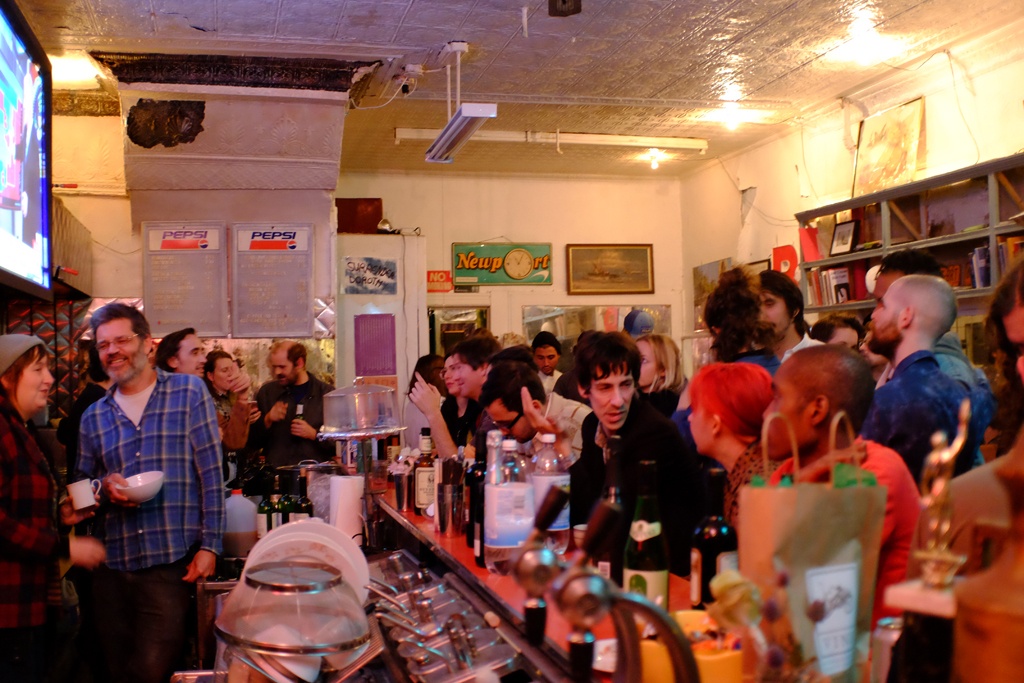
I often listen to a single song on repeat as a way to focus while I’m working in the studio. Since the election, I’ve been playing a lot of Gil Scott-Heron. Listening on a loop, the songs become a texture, create continuity. Occasionally you pick up on a lyric or a particular hook in the melody and it holds you for a while, confirming or more often complicating its meaning on each rotation. You enter a sort of timelessness in between these fleeting occurrences that opens up time you never knew you had. You can step between the familiar parts and into an endless expanse of possibility. It’s a way of stopping time so you can find more of it. It’s the opposite of newsfeed time. The story that Scott-Heron uses to introduce the song Winter in America (each time told a little differently) is an “old African folktale,” which he affirms because, as he says, “some old Africans” told it to him. It is more than a harbinger of a world bereft of seasons. It is a portent of a country with dwindling options, one stripped of the capacity for political change, without viable alternatives – in short without democracy. In the folktale, the new weather brings us “a little bit of winter every spring, and a little bit of winter every summer, and a little bit of winter every autumn, and then a whole lot of winter all winter long.” The politics, like the seasons, used to be more changeable. In Winter in America, winter is everywhere, and the system that keeps you down keeps you down year-round.
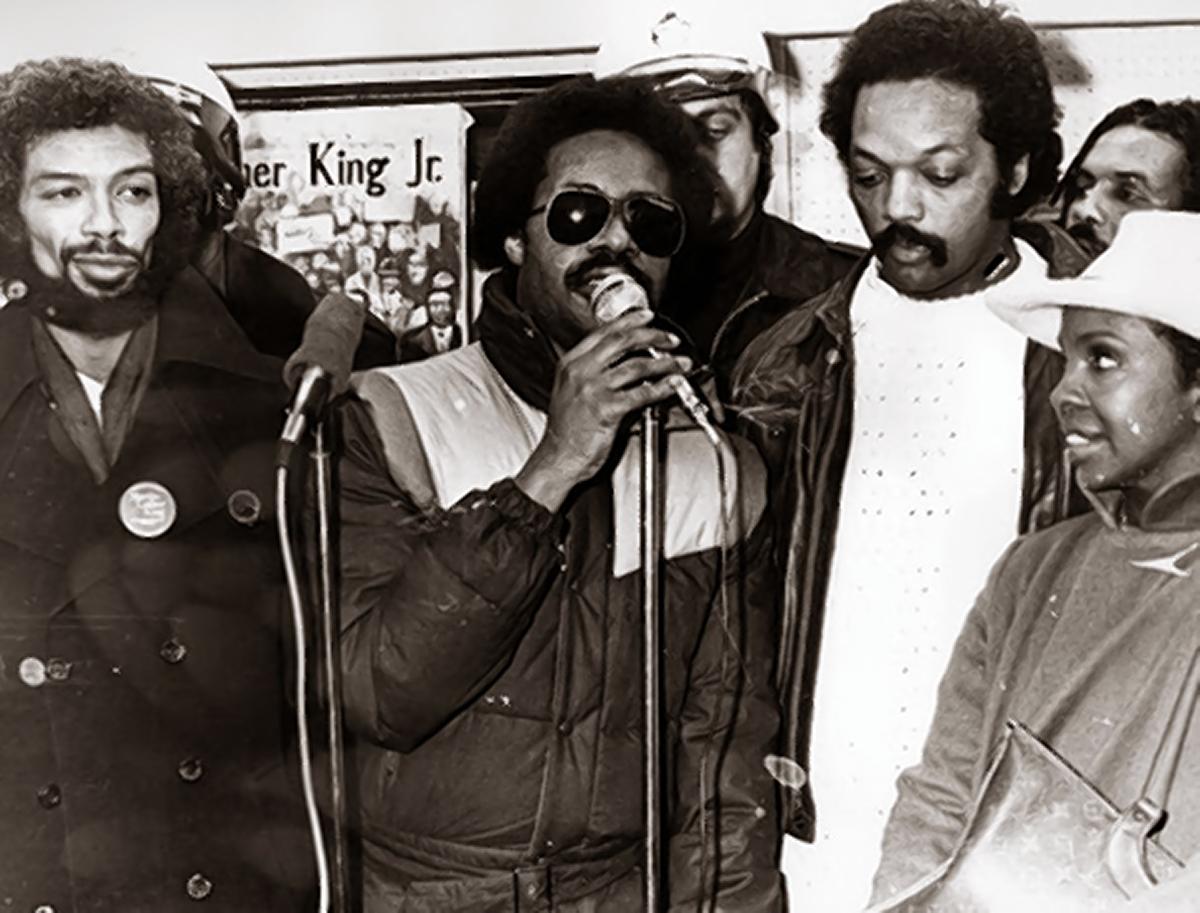
I can’t know intimately the horrors of daily life that led Gil Scott-Heron to write Winter in America. For one, I am not black. For another, I was not alive in 1973. I have not yet watched so many ardent hopes for justice and equality be assassinated, incarcerated, or exiled as he perhaps must have. A Google search for 1973 brings up so much trouble that would have cut into any sensitive person’s psyche. So, we can speculate: Watergate, COINTELPRO, Vietnam, endemic racism, specific or generalized acts of state violence. No matter. The song is a lesson on the power of art from someone who managed to still make art at a time when his world – the truthful and soulful world – had been besieged. Revolution was on his mind. As Scott-Heron writes in the liner notes to his 1977 album Bridges:
“We still believe, as did El Hajj Malik Shabazz (Malcolm X) among others, that America has the potential to undergo a bloodless revolution, in that change may come without pitched battles in the street. But there has already been bloodshed and stains are fresh. It is winter and we are regaining our strength. The key to our progress lies within our ability to support alliances between ourselves and Third World people. The support begins here. In solidarity with Chicanos, Puertoriqueños, Oriental Americans and Native Americans we will continue to focus on the need for justice and opportunity. We have debts to pay. In the interest of comrades who have contributed their lives, as well as in our own interest.”
In Winter in America, the fiery resolution and anger of the 1970 track “The Revolution Will Not Be Televised” has given way to the reality of a world bereft of resistance leaders – perhaps following the assassinations of Martin Luther King Jr., Bobby Kennedy, Malcolm X, and Fred Hampton. There “ain’t nobody fighting, since nobody knows what to do.” And worse, “nobody knows what to save.” Should they save American exceptionalism? Nixonian imperialism? Save the enduring legacies of chattel slavery and Native American genocide? The song asks rightly: how much of this mess is worth saving, anyway? We are told, “Brother, save your soul.” Scott-Heron tells us what’s on the line. Maybe this means we shouldn’t fight to save what isn’t worth saving. Maybe the fight needs to be constructive rather than reactive. Visionary. Ready to create something worth saving in place of what we might lose.
And now it’s winter
Winter in America
Yes and all of the healers have been killed
Or sent away, yeah
But the people know, the people know
It’s winter
Winter in America
And ain’t nobody fighting
‘Cause nobody knows what to save
In the days after the election, people I barely knew would interrupt whatever conversation we were ostensibly having to ask, “What are you doing? What should we do?” For many on the left, the dread of a far right Presidential platform seemed to instill a feeling of paralysis. Performance artist Mores McWreath’s weirdly compelling YouTube video So Angry (2016) sums up the phone calls that many were having following the election. In the fifteen-second “spot,” McWreath encapsulates the irony of the comfortable, urban white dude at home in his rendering-perfect apartment, listening to smooth jazz, or whatever, and feeling a need to “do something.” In other words, McWreath emblematizes the least likely to “do anything” to upset their way of life, when it’s their way of life that perhaps needs to be done away with.
Mores McWreath, Spot 687, So Angry (2016)
And yet, within days of the election working groups formed, held meetings, and wrote up lists of just what should be done. New collectives, hailing from inside and outside of the art world, sprouted up. Sunview Luncheonette, the art space/co-op I co-founded in Greenpoint in 2012, hosted direct action planning meetings, and like many other small arts organizations in the city, we offered our space to any established or nascent group who just needed a place to meet to talk things out. We attended discussions, readings, bonfires. The New York-based art journal Hyperallergic co-organized a forum, “Art After Trump,” a marathon reading/performance of thought devoted to undoing, blockading, occupying, and resisting the coming administration’s regressive agenda. The evening doubled as a fundraiser for Housing Works, a project born of the AIDS crisis and founded in the 1990s by four members of ACT UP (the AIDS Coalition to Unleash Power) to address homeless populations living with HIV/AIDS, as Hyperallergic’s editor Jillian Steinhauer described in her editorial announcement of the event. On the night of, more than 150 people spoke, read, screamed, vomited, danced, sang, cursed, and collectively dreamed of a way forward. How must we respond as artists – the assumption was, of course, that we must – to the trouble ahead? The night was exceptional, I think, and exceptionally inspiring in that not all of the presenters were artists, nor were all of the presenters voices we had grown tired of hearing. There was a broad representation of disciplines, languages, and ethnicities, and many new faces to the political art “scene.” For me, and for others I spoke with at the event, it was one of the first post-election moments where we felt that maybe we would be alright.
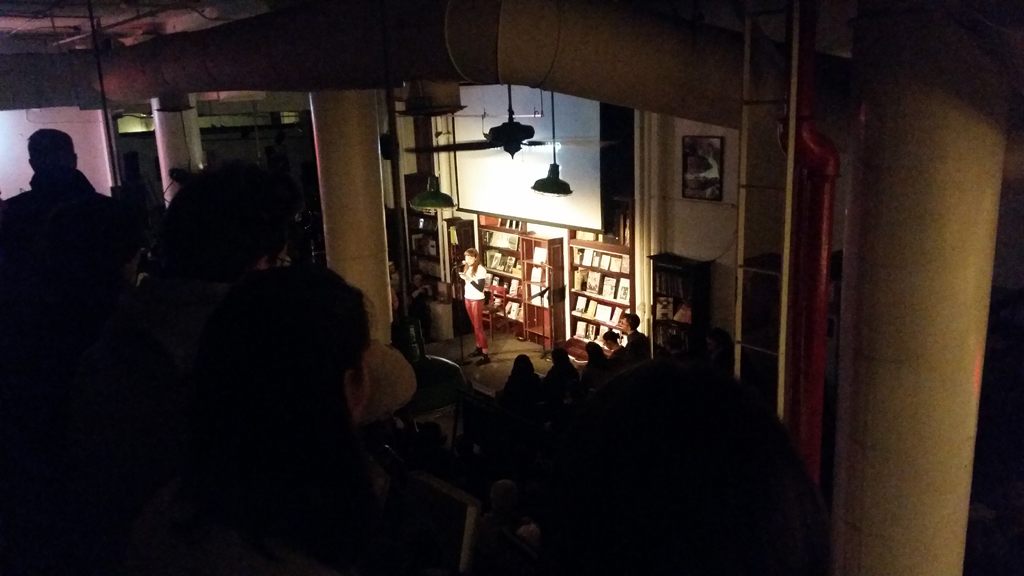
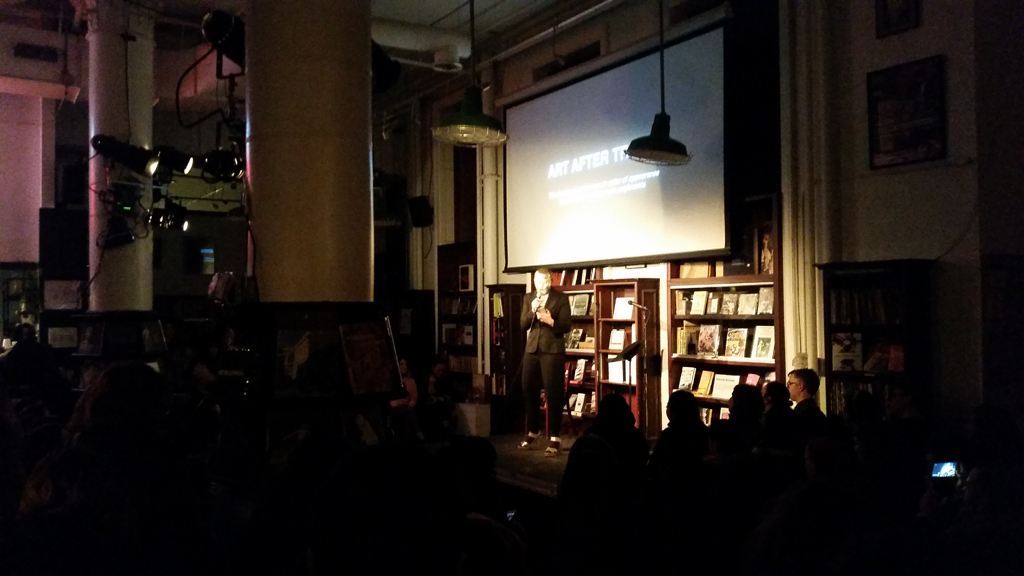
The event that Angela Conant organized at Pratt Institute a few nights later invited artists Autumn Knight, Jen Liu and Sunita Prasad to share their work and lead a discussion around what artists specifically can or should try to do to resist Trumpism. The evening followed up on the publication of Opposite Day (2016), a kind of backwards newspaper which Conant had assembled as a response to the election. Culled from a number of artists’ social media posts that exposed the prevalent confusion, Conant’s publication inverted the relationship between news story and response. The responses posted on social media became the news story. Among the questions asked by the discussion and publication: Were artists supposed to continue making their work, unaffected, or were they supposed to start to make work that reflected on the reality of a new political context? Among the night’s discussions, one recurring question was, Where was this work supposed to be made? In the “bubble” cities that had not proven to be enough of a bulwark to counter the Electoral College? Should artists be part of the work to reform and strengthen political institutions or work to undermine them?
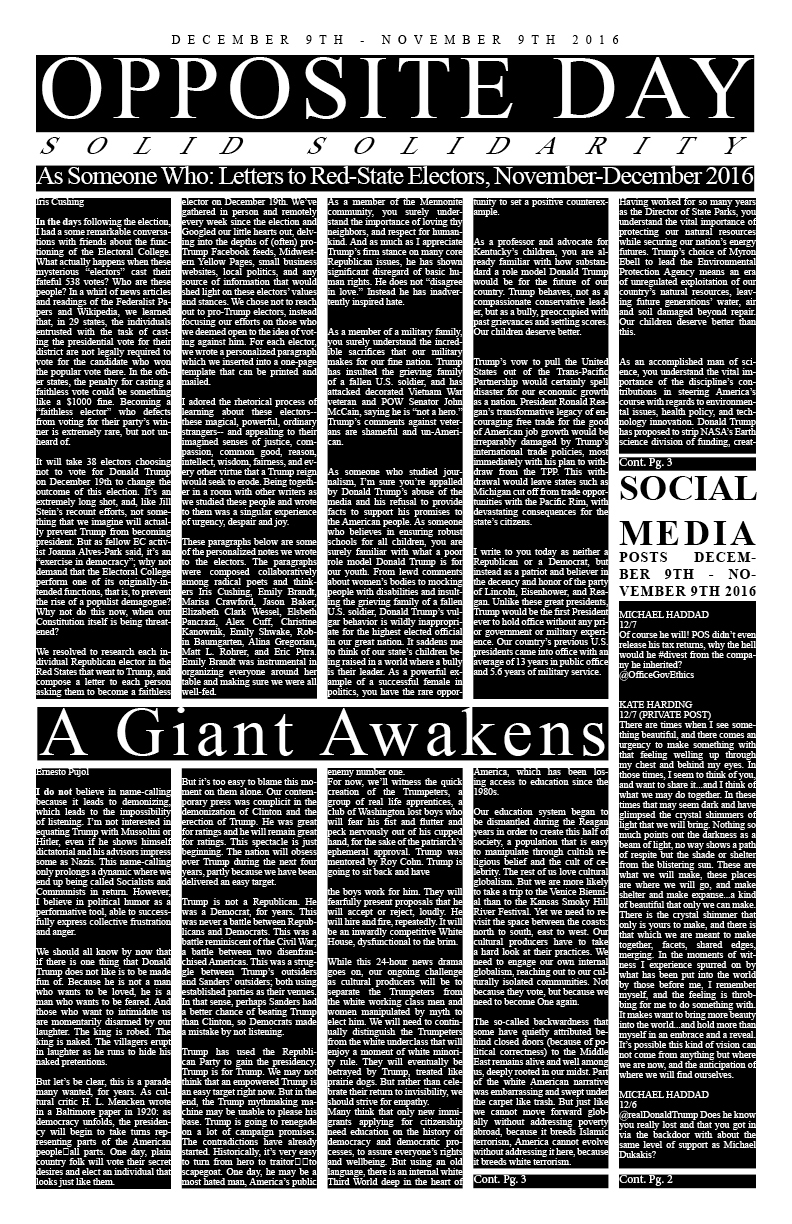
During the Q&A, one artist in the audience suggested that we refrain from showing our work in New York (at least for the year ahead) and instead take our work on the road to the towns and counties that had voted for Trump. The idea was not so much to confront Trump voters, but to learn about them, and hopefully to infect them. One of the particularities about the market-centered system for arts funding in the US is that outside of major metropolitan areas (cities big enough to have their own art markets, or participate in the global one) there are scant resources for artists or arts and culture groups. As such, contemporary art as a field or cultural subset struggles to make inroads in communities located outside of the metropoles. The rare exceptions are the funding of art by universities through their art departments or college galleries, “creative placemaking” programs like ArtPlace, or through projects like Apex Art’s Franchise. The idea of pushing for more contemporary art outside of the urban centers that fund it will hopefully catch on in the years ahead.
The conversation at Pratt reminded me of two projects I encountered while in residence at CAS by Oslo-based artists Marianne Heier and Franz Petter Schmidt, and expertly curated by Knut Åsdam. Heier’s Witchfire (2016), performed in collaboration with dance company Kompani Kunstgress, presented “the textile industry's development through history, focusing on working conditions and tensions between production, consumption and profits.” 1
- Heier, Marianne: Artist’s website: http://marianneheier.no/?project=witchfire
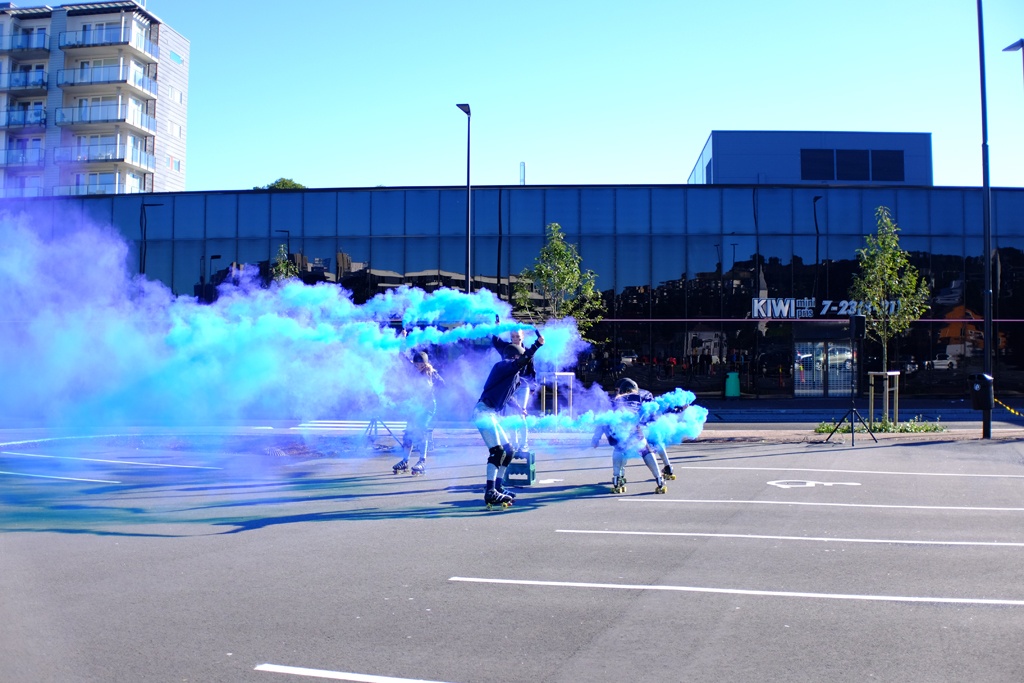
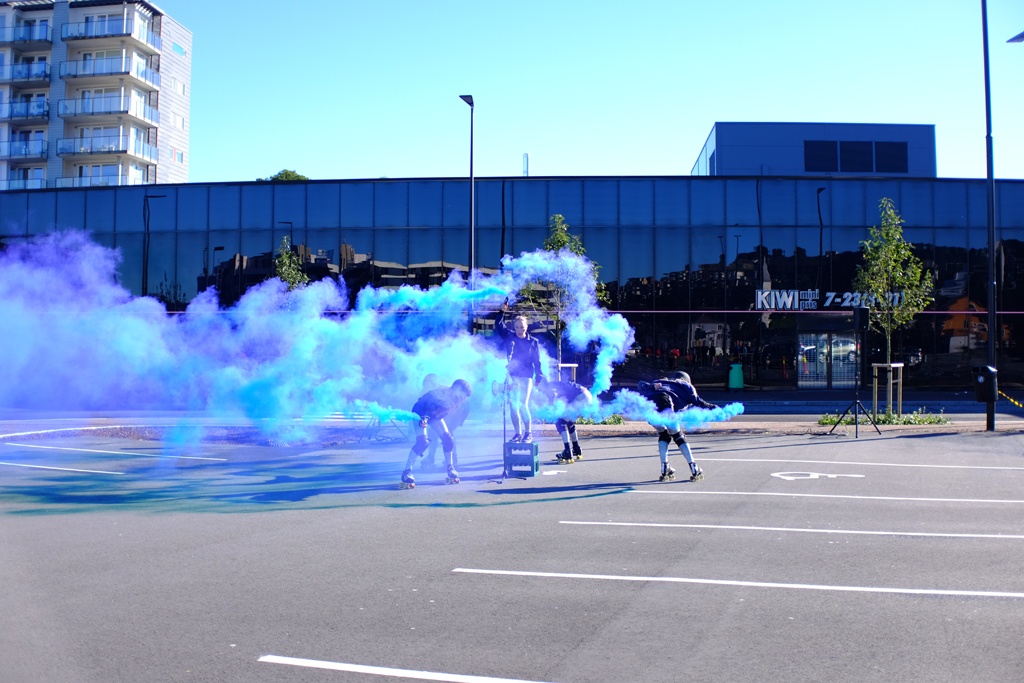
Just up the road from the outlet mall, in a former textile mill cum senior/community center, Franz Petter Schmidt’s Til De forenede Ullvarefabrikker (2016) presented archival materials, found objects, and artist-made textiles that reflected on the wool spinning mill’s former life. Upon entering the mill, you first encountered a small branch library that had been installed in the ground floor since the mill’s closing. Volunteers – ostensibly retirees and former mill workers – led you up a litter-strewn staircase to encounter Schmidt’s installation on the second floor. As I’ve experienced in other defunct industrial sites, the mill gave the impression of having been abandoned with great haste, and perhaps recently. With no narration from the volunteer guides, visitors were left to their own devices and allowed to peruse materials culled by Schmidt (a textile artist who was recently a research fellow at the Oslo National Academy of the Arts) and presented throughout the ~20,000 sq. ft. former company offices. Being in the empty space made you wonder what had been lost beyond the jobs. How do you describe the loss of a way of life? Of a solidarity bred between co-workers against and through and sometimes in favor of their day-to-day, 8 or 12 hours a day at work in such a place? Schmidt’s textiles are about a fabric, a fabric that provided a meaningful living for an entire town, for a time. After a set period of time, the volunteers informed us that our time was up, and proceeded to lead us back down the stairs. I had the sense that the time constraint was a way of translating the precariousness of the temporary archive Schmidt had constructed. You had but a limited time to assess this curated past of manufacturing and the solidarity produced by industrial working conditions, after which you had to return to the world we currently find ourselves in, and head back to the mall.
These interrelated works perfectly illustrated what we are living through in the neoliberal shift from local factory production to outsourced production – in other words, mills replaced by malls. Åsdam’s curatorial text poses the question, “What does it mean to go from a manufacturing economy to a consumer economy?” This very question would turn out to be one of the main reasons given regarding why the American electorate in former manufacturing states chose Trump over Clinton. Trump, like Bernie Sanders on the left, appeared willing to listen to the concerns of “average Americans” who lived through all that the dismantling of industry had wrought on their former manufacturing towns. Even if Trump’s concern rings hollow given his and his daughter’s own use of outsourced production, it was his presumed willingness to listen and address the interlinked problems of joblessness, stagnant wages, and lack of future career prospects (coupled with an anti-immigration, protectionist, and anti-feminist platform) that probably won him the support of the former manufacturing classes.
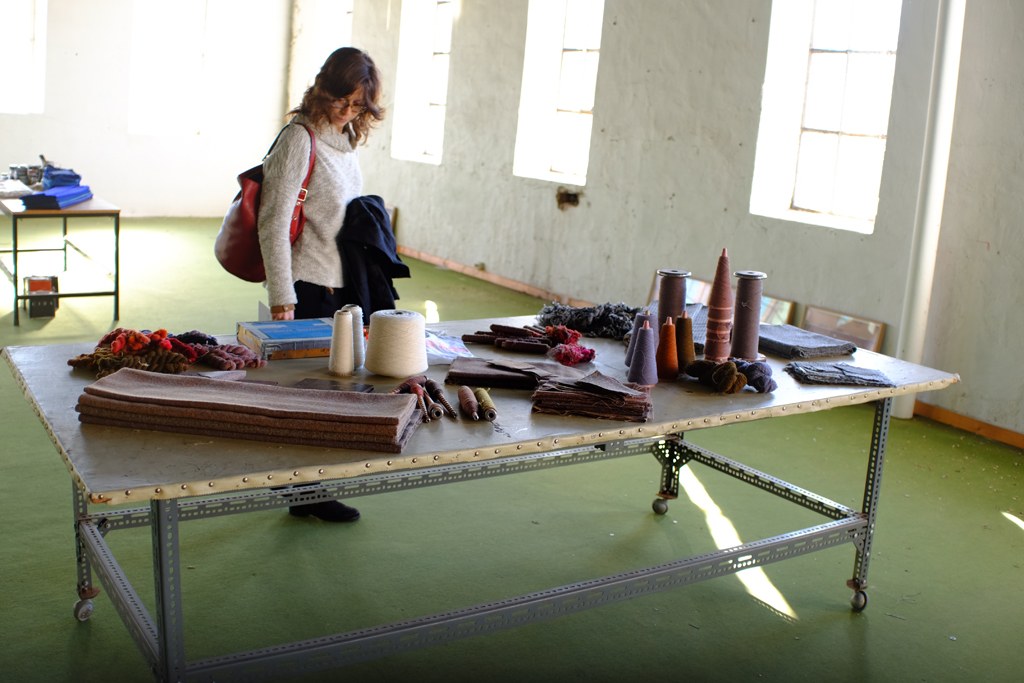
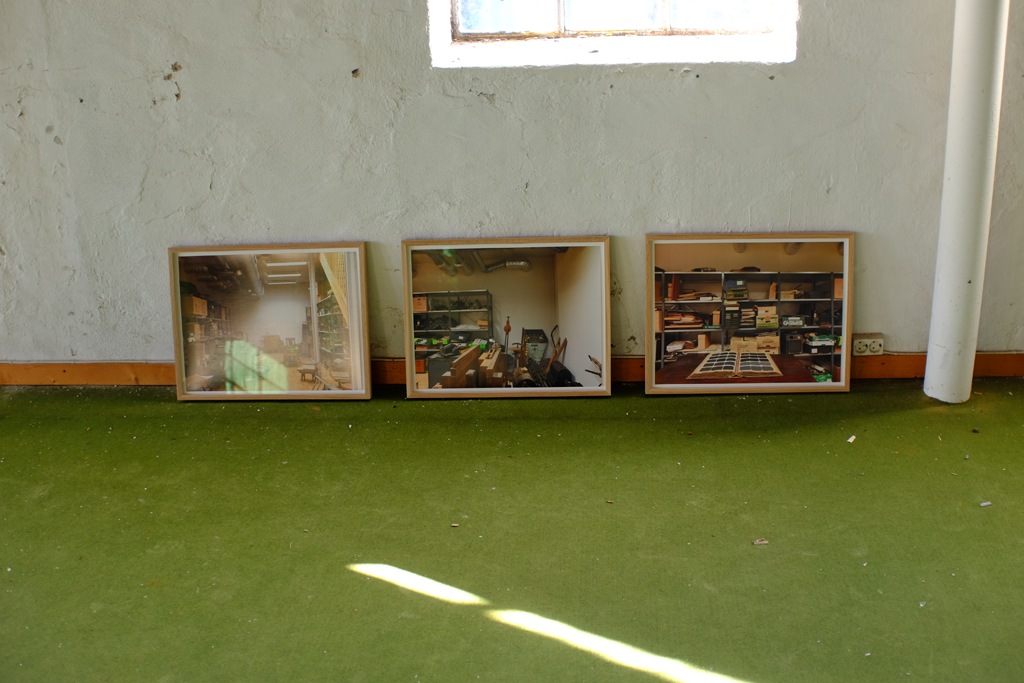
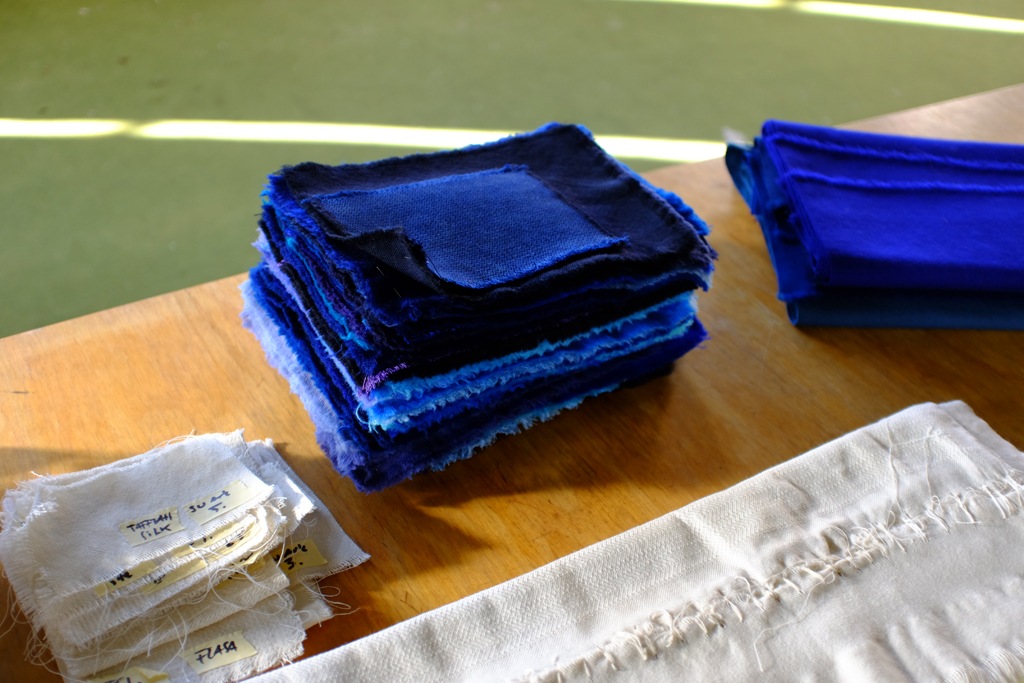
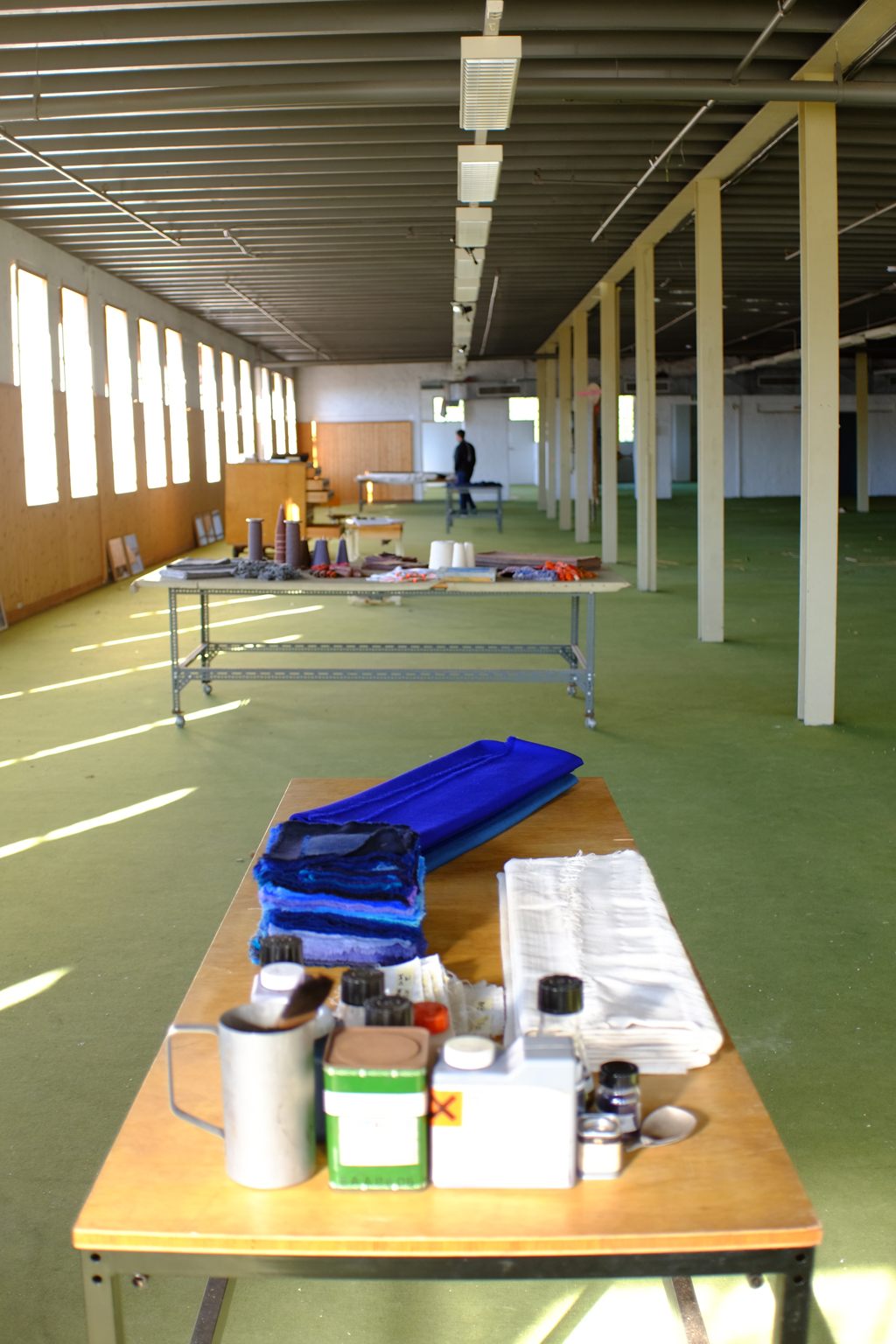
If you were looking at the New York art world in the summer before the election, you would probably have felt – as many did – that Trump couldn’t possibly win the election. Revolutionary spirit was in the air. For the usually staid and humid New York summer gallery circuit, summer 2016 brought together a host of shows that were defined by their politics as much as their art. There were open-format shows organized by Martha Rosler (at Mitchell Innes + Nash) and Hank Willis Thomas (at Jack Shainman) that invited artists, activists, and the public to create dialogue around the housing crisis or freedom. There were large-scale, political, public art projects like Pedro Reyes’s Doomocracy, produced by Creative Time and “intended to create real dialogue around the contemporary state of global and US politics”. Tomashi Jackson‘s show at Tilton Gallery amplified and added historical footnotes to the righteous foment of the Black Lives Matter movement. (Jackson’s ingenious show in particular coupled the color theory of Albers with Brown v. the Board of Education, the landmark Supreme Court case that theoretically ended school segregation.) Artists Space opened their Walker Street storefront up to Decolonize this Place, who converted the space into “a shared resource for art, research and organizing,” around, “indigenous struggle, black liberation, Free Palestine, global wage workers and de-gentrification.” It was not, all in all, a bad year for political art. At the same time, resistance to the Dakota Access Pipeline (DAPL) was mounting, and the budding Black Lives Matter movement was coming into its own as a public force. Much criticism has been lobbed at New York City, Los Angeles, and other metropolitan centers for existing as “bubbles” out of touch with the politics that would sweep Trump into power. I would argue that the power of these exhibition-life-art-happenings, and the relationships that they forged between artists and activists, have helped to draw a map of action in the arts for the long road ahead. The work of these projects is still likely to play out in future resistance movements, of which there will be many, as will the solidarity they helped engender between political and not-especially-political artists and institutions.
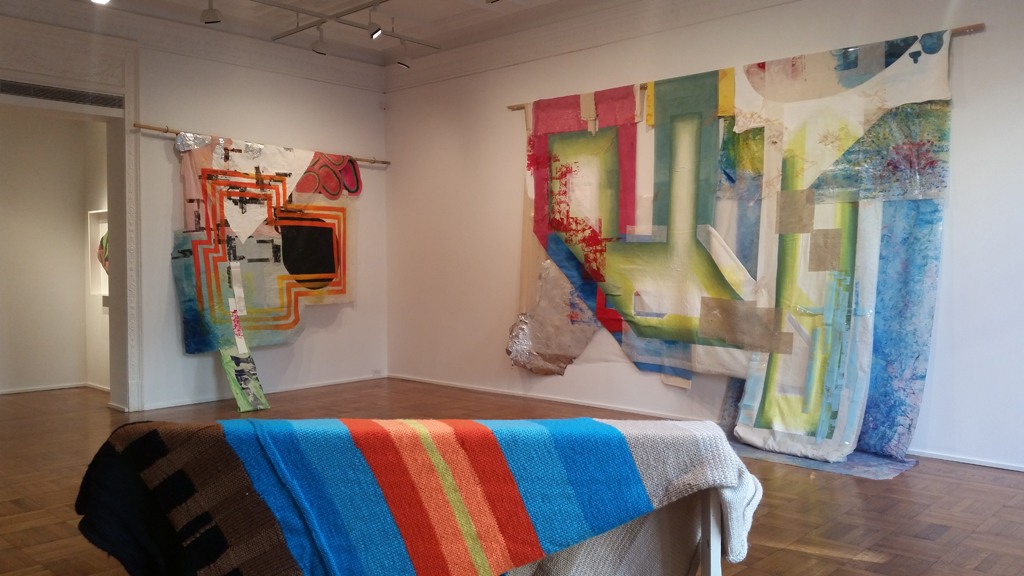
Just like the cities staggered on the coastline
Living in a nation that just can’t stand much more
Like the forest buried beneath the highway
Never had a chance to grow
Never had a chance to grow
While not the most precarious of institutions, the arts have a great amount to fear from Trump. He has made clear that he is not above punishing any artistic gesture that doesn’t flatter his ego. He is already leading a Twitter war to impugn the cast of the Broadway musical Hamilton, the comedy television show Saturday Night Live, and now the American actress Meryl Streep. If the violence of Trump’s minions, who assaulted an artist who painted an unflattering portrait of him, is any indication, we may be in for a much more in-your-face version of the “culture wars” of the 80s and 90s.
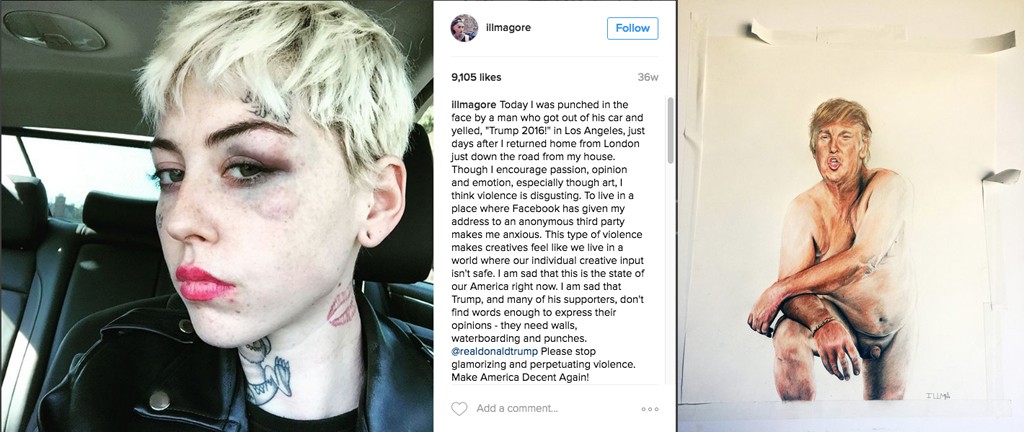
The culture wars resulted in the decimation of state funding for the arts, and created a situation whereby in order to secure any public funding, arts groups and individuals must temper their message, or even collude with the state’s aims. With the rearing of the ugly beast of nationalism in the US and other countries, global solidarity and interdisciplinary solidarity is more important than ever. Can art play a role in this? Can it lead? Art has never been divorced from ideology, and contemporary art has its own ideological role. Think of the CIA’s funding of AbEx or the Clinton’s State Department’s “Smart Power” project (a form of “soft power diplomacy”) that funded social practice work to leverage our diplomatic relationships with countries such as Pakistan, Kosovo, China. Arts and culture, starved of public funding as they are in the US, were given a starring role in Obama’s administration, as evidenced by the mutual embrace of popular celebrity figures by the Obamas themselves.
A national “Art Strike” is planned for January 20th, Inauguration Day. While we might wonder why the focus from the art world is on an “art strike” led by several notable “political artist” voices, rather than on a general strike that could be subtly led by artists, the idea seems to be to co-promote a general strike in all sectors of the economy, starting with affinity groups. Artists and workers in arts institutions – while often at radically different ends of a spectrum of class, privilege, education, and social mobility – are presumed to be “in sympathy” or at least working within the same “sector” of the economy. It remains to be seen what the art strike will look like. How does an artist go on strike? By taking the day off? As many artists are effectively self-employed, or teach, it is unclear what “taking the day off” would mean in this context. Many artists in the US supplement their art practice with jobs, so do they strike from making/viewing/consuming art and any function of their job on J20? And if your art is about the political and the art strike is your new project? If I am making a film about life in post-Trump America, do I film at the inauguration as part of the strike? Or do I sit this one out, refusing to make art as I would on a usual day? More broadly, let us consider what our role can be as artists in the growing resistance. Is it to organize other artists? To model solutions? To critique and put our (arguably, in some cases) more privileged bodies on the frontlines? This is not meant by any means to argue with the intention of the strike, but I would argue that the model for Martin Luther King Day, sometimes called a “national day of service” or “a day on, not a day off,” could apply to the J20 art strike. Similarly, I would suggest that an art strike should function as a strike with art – rather than a break from it – and that art versus Trumpism’s brand of no-infotainment culture has more revolutionary potential than it does under a neoliberal order. And that for one day even those artists whose art practices don’t tend toward service might imagine what their art could do in the service of one of the many causes that finds itself under attack by the incoming administration, not the least of which will be art itself. Under Neoliberalism, art is so often the carrot that distracts from the stick of military domination and the bread and circuses of ancient Rome. Trumpism resembles fascism in announcing that there is no need for a carrot. The politics itself becomes the circus, and Trumpism, the culture.
The Constitution
A noble piece of paper
With free society
Struggled but it died in vain
And now Democracy is ragtime on the corner
Hoping for some rain
The only time I got to see Scott-Heron perform was to a near-empty house at the Spiegeltent, a reconstruction of a Belgian travelling theater tent that served as a pop-up venue on a pier in lower Manhattan in the mid-2000s. It was an early show. A friend was working the door that night, and I showed up long after the show started – convinced I’d never get in and so expecting to hang out at the door with my friend for the night. Instead, the house was almost empty, and maybe half of the thirty people there seemed to be waiting around for the night’s second show. It was cold out. I remember this as my friend was wearing a leather jacket under a fur coat, looking like he’d just stepped out of Mean Streets (1973). Scott-Heron was seemingly unfazed by the lack of an audience, and played each song with heart. Afterwards, he took a seat at a table in the back of the club, like anyone. All told it was a glory-less night for a living legend who has been called the “Black Bob Dylan,” though I hear he never appreciated the reference (“Dylan can’t sing”). When I went over to compliment Scott-Heron on the show, he was kind and almost shy, sincerely thanking me for being there. Back to Winter in America. In a democracy, you come to expect political swings and shifts just as we expect seasons. But the current swing to the far right risks to set us into a state of perpetual winter. We must guard ourselves against “frozen aspirations and frozen inspiration,” as Scott-Heron knew all too well the difficulty of making art that confronts and rebuffs the powers that be and their power over us. It’s good for us to think about what our art does in the world, and perhaps, for a time, we should aspire to make art that thaws, art that shakes us out of the ice.
You start to relate everything to the season of ice, and so your dreams become frozen and your ideas become frozen and your promises become frozen. It is frozen days and frozen nights. It is frozen aspirations and frozen inspiration. There is something wrong. I mean, there is something wrong, I mean, there is something wrong, I mean, there is something wrong, I mean…
- – Dylan Gauthier
Unless otherwise stated, all images by Dylan Gauthier.


